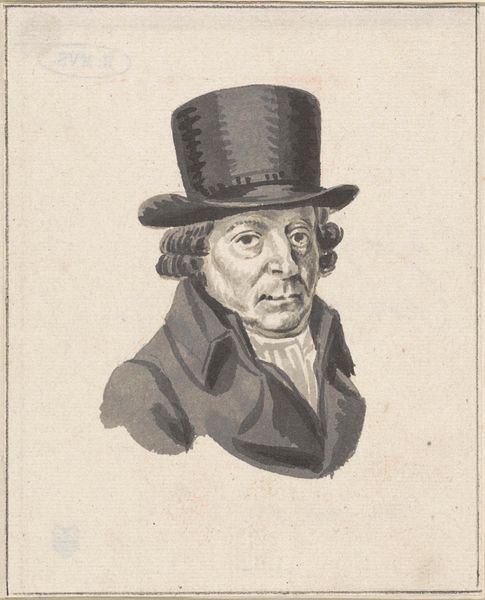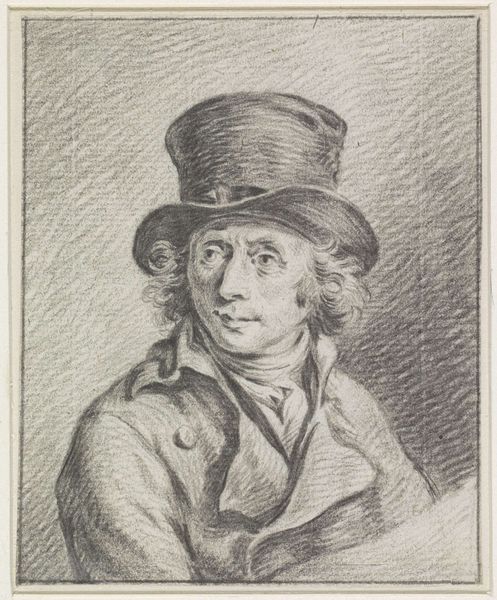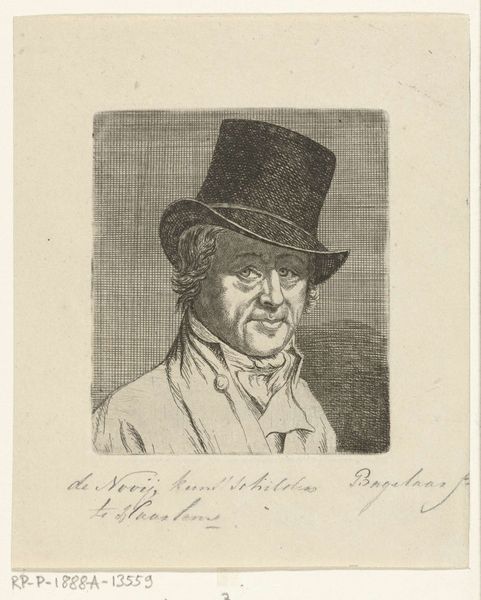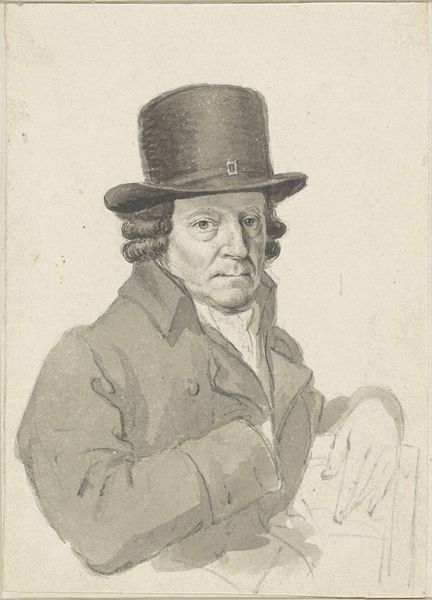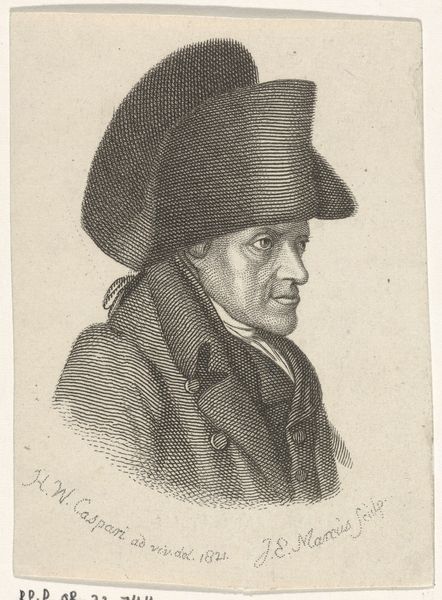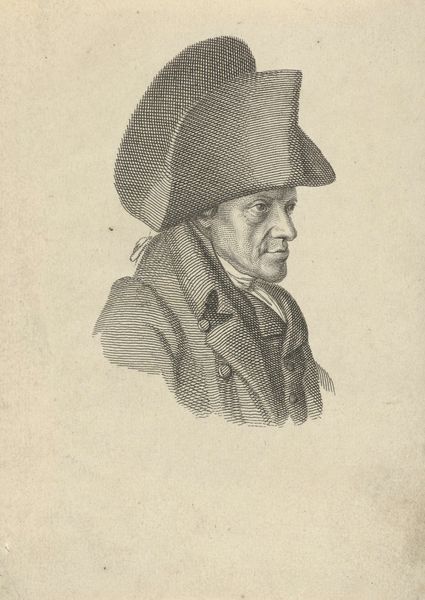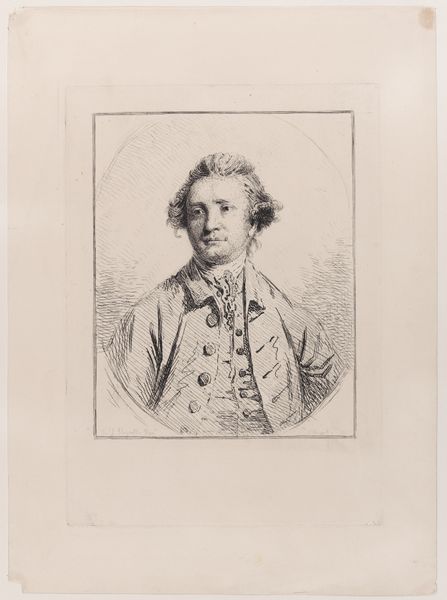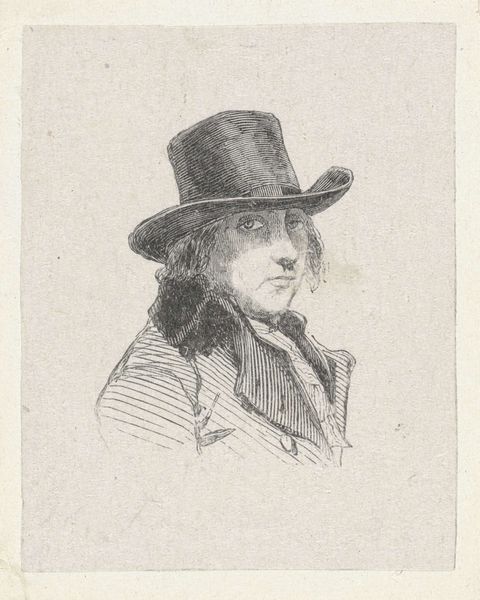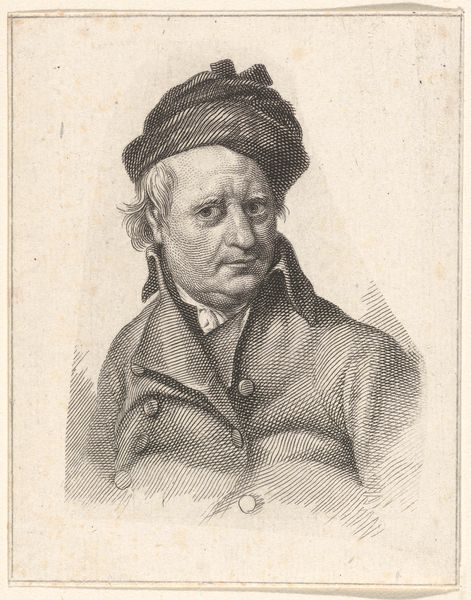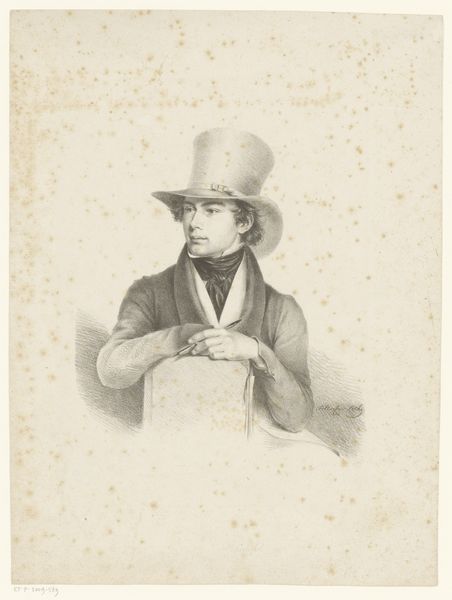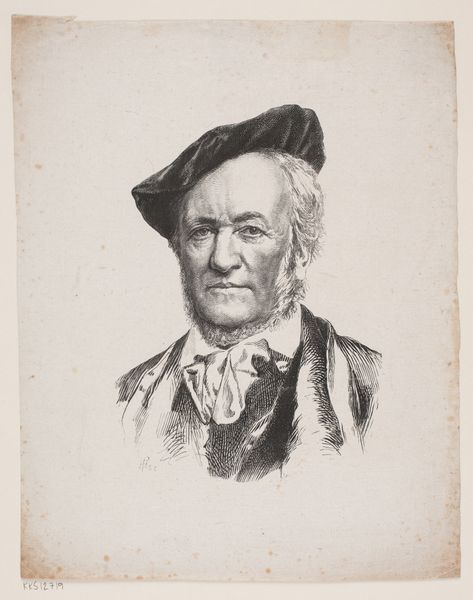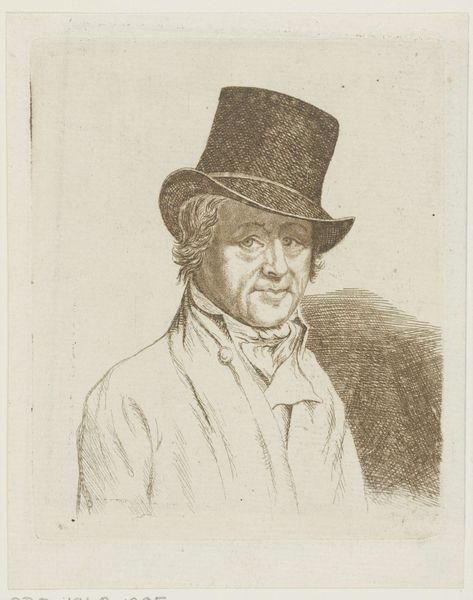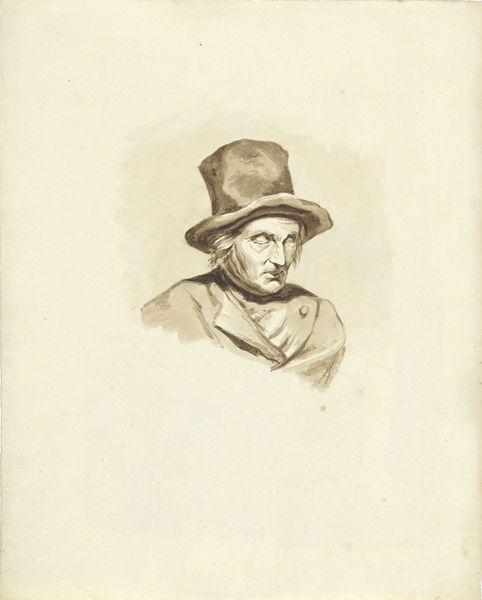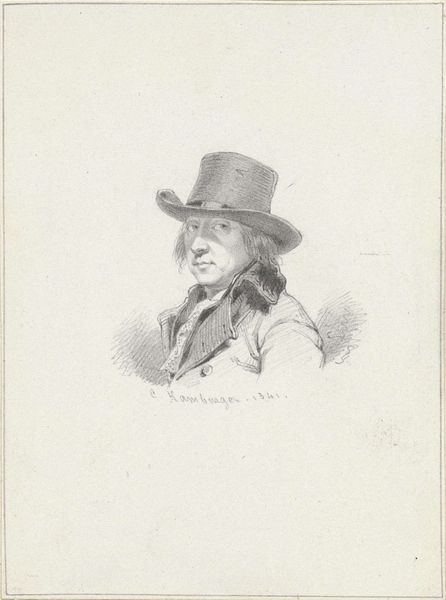
print, engraving
#
portrait
#
neoclassicism
# print
#
old engraving style
#
caricature
#
portrait drawing
#
engraving
Dimensions: height 142 mm, width 90 mm
Copyright: Rijks Museum: Open Domain
Jacob Ernst Marcus created this portrait of Johannes Petrus van Horstok using etching, a printmaking process popular in the 18th and 19th centuries. The magic of etching lies in its indirect approach. The artist coats a metal plate with a waxy, acid-resistant ground, then draws through it with a needle, exposing the metal underneath. Immersing the plate in acid then bites into these exposed lines, creating grooves. Ink is applied to the plate, filling these grooves, and the surface is wiped clean. Finally, the plate is pressed against paper, transferring the ink and creating the image. The fine lines and subtle shading achieved through etching allowed for detailed and expressive portraits like this one. The technique enabled printmakers to produce multiple copies of an image, making art more accessible to a wider audience, and playing a crucial role in the dissemination of knowledge and ideas. Recognizing the labor and skill involved in etching encourages us to appreciate the technical ingenuity that underlies its aesthetic appeal.
Comments
No comments
Be the first to comment and join the conversation on the ultimate creative platform.
